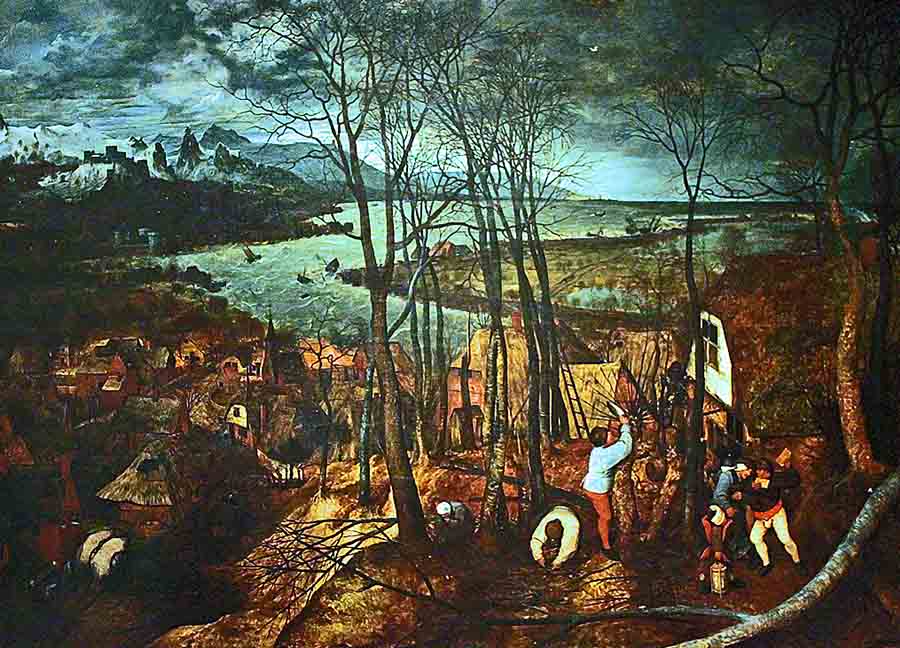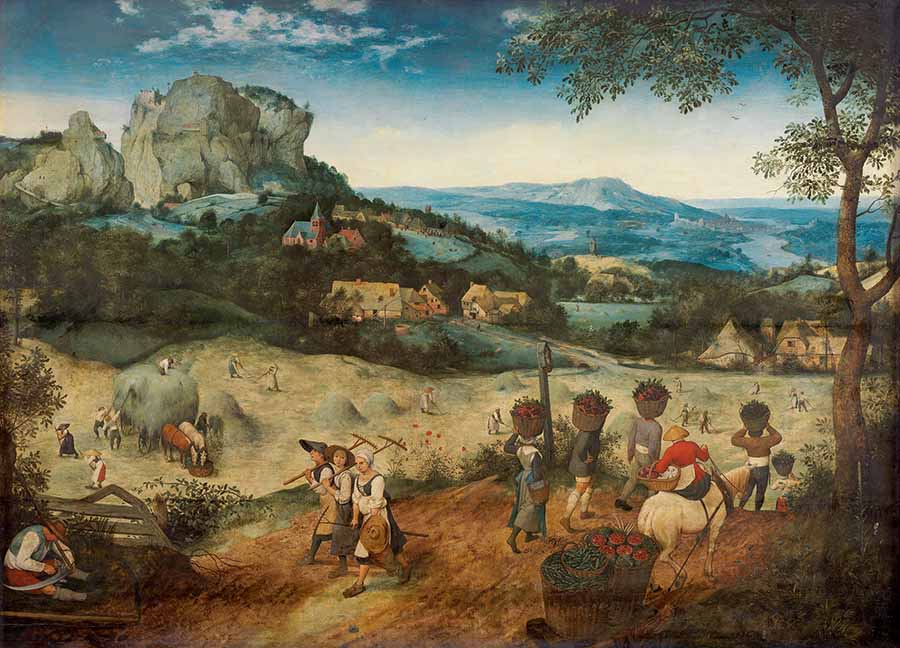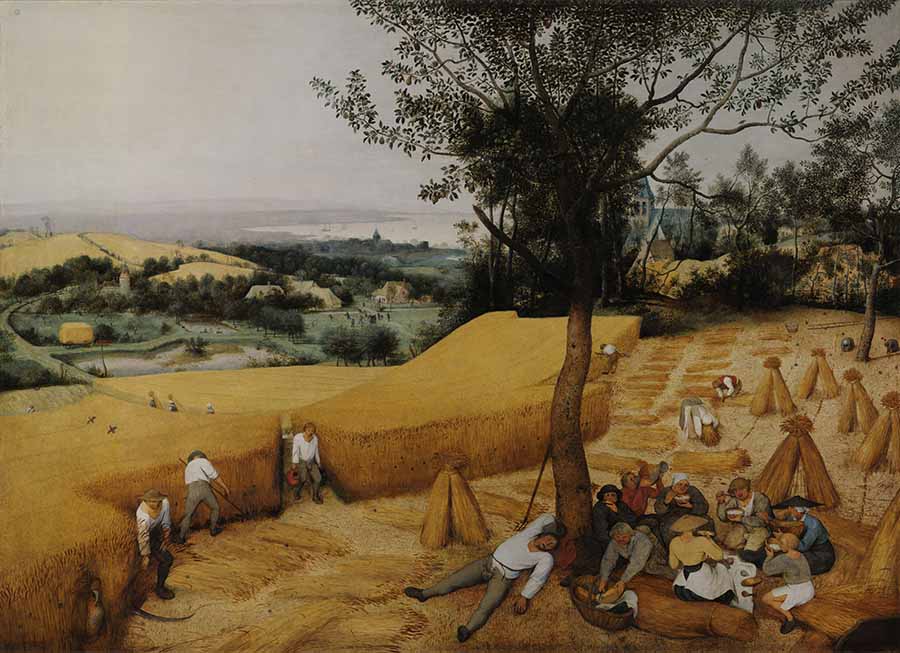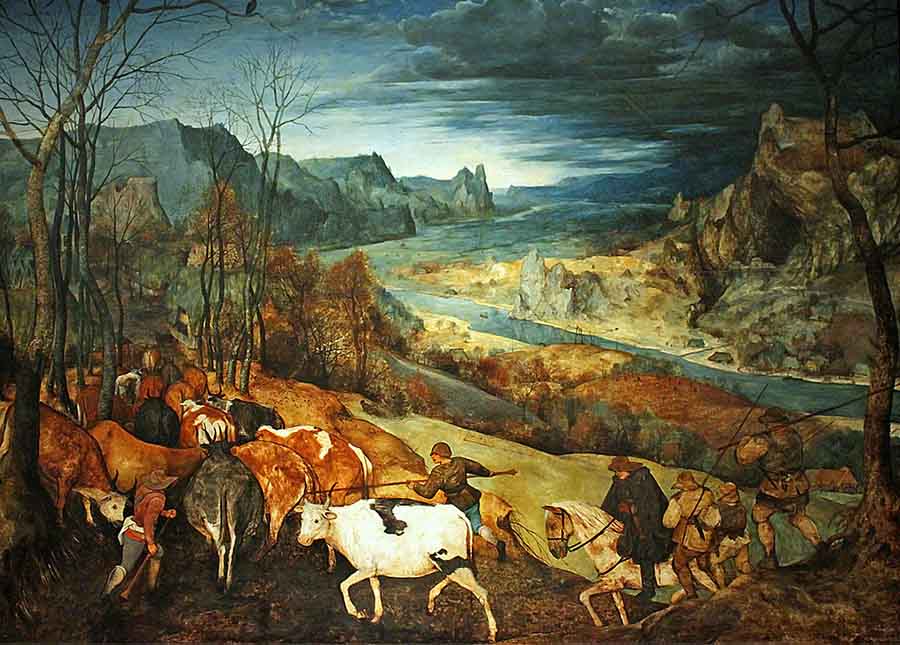Image copyright©️Scott Cai
[New Sancai Compilation and First Edition] Dutch painting master Pieter Bruegel the Elder created six seasonal woodblock oil paintings in 1565, faithfully presenting the background of farmers' life at that time. Unfortunately, one of them has been lost. Here are the remaining five:

△ "The Gloomy Day" is an oil woodblock painting created in 1565 by the early Dutch painting master Pieter Bruegel the Elder. It was the first of a series of six seasonal paintings he created (the first, depicting late spring, has been lost). The scene of this painting takes place around February and March, when the weather is bleak and the trees are bare. Dark skies and dead ships also signal that bad weather is coming. Farmers each selected their location and rushed to prune the trees before spring fully arrived. In this painting, the bold contrasts of shadow and light, the pronounced gradations between planes, the amazing harmony of yellows, tans and browns, make this work a masterpiece. The painting is currently in the Kunsthistorisches Museum in Vienna, Austria.

△ "The Haymaking" is an oil painting on wood created by Bruegel the Elder in 1565. Part of a series of paintings, this painting depicts June and July. As with many of his paintings, the focus is on farmers and their work, without the religious themes common in landscape works of the time. The painting is now part of the Lobkowicz family collection and is located in the Lobkowicz Palace in Prague Castle, Czech Republic.

△ "The Harvesters" is another oil painting on wood completed by Bruegel the Elder in 1565. It depicts the harvest season in July, August or late summer. Some farmers are harvesting wheat, while others are having a meal, some women are eating bread and cheese, and a man on the far right is shaking an apple from a tree. Picking pears. The painting shows a large number of activities representative of rural life at that time. In the painting, workers carrying wheat sheaves across the open space, people bathing in the pond, children playing and ships in the distance all convey a sense of distance. The painting has been in the collection of the Metropolitan Museum of Art in New York since 1919, and has been hailed by the museum as "a watershed in the history of Western art" and "the first modern landscape painting."

△ "The Return of the Herd" is an oil woodblock painting created by Bruegel the Elder in 1565. This painting is one in a series of six works depicting different seasons. The protagonist of this painting is a shepherd who has finished grazing and herds the cows. The autumn colors and bare trees in the background represent a scene from October and November. Bruegel the Elder used white, black, and moss green to render the calm atmosphere of autumn, such as colorful leaves, shepherds' clothes, and the earth, using the same brown tones. The contrast between the black clouds in the upper part of the picture is also impressive. The work is currently in the collection of the Kunsthistorisches Museum in Vienna, Austria.

△ "The Hunters in the Snow" (the Hunters in the Snow), also known as "The Return of the Hunter", is an oil painting on wood created by Bruegel the Elder in 1565. The painting is one of a series of works depicting different times of the year, depicting a late winter scene in December and January, in which three hunters are returning from a hunt with their dogs. Judging from the picture, this hunting was not successful. The hunter looked exhausted and the dog looked oppressed. A hunter brings the carcass of a fox, illustrating the scarcity of hunting proceeds. There were hare tracks in the snow, indicating that they had escaped. The overall visual impression is that of a calm, cold, gloomy day; the colors are soft white and gray, the trees are bare, and the climate is very bleak. This first and most famous painting of a winter landscape in European painting is now in the collection of the Kunsthistorisches Museum in Vienna, Austria.
(Compiled by: Bai Ding)
(Editor: Jiang Qiming)
(Source of the article: First published by Xinsancai)
